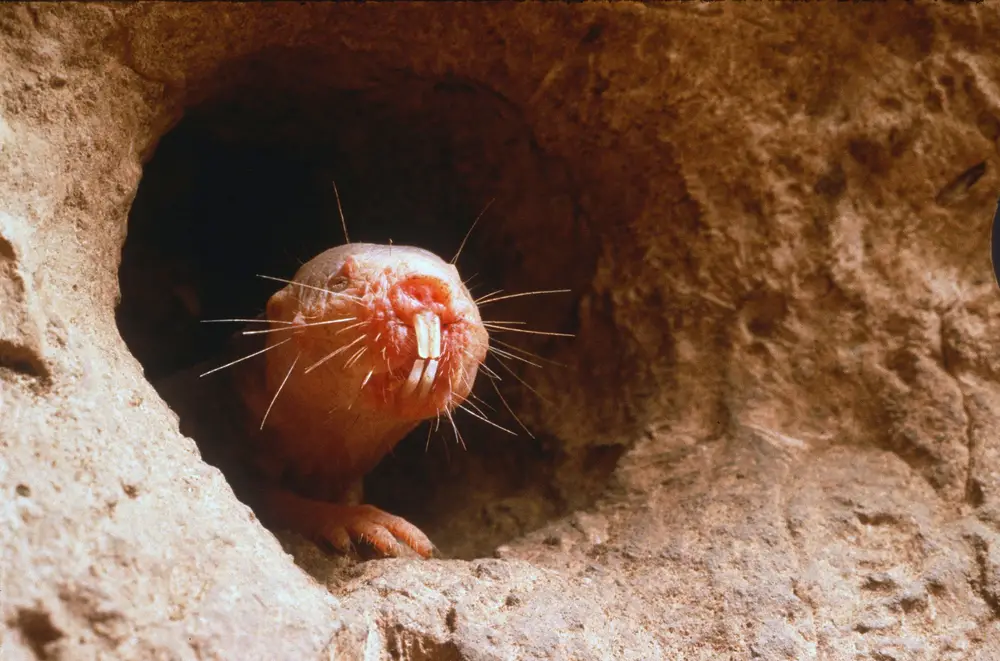Science & Tech
Turns Out Naked Mole Rats Possess Yet Another Superpower — They Simply Do Not Age

Throughout history, Humans have attempted to find a fountain of youth and stave off the process of aging and inevitable, physical demise — as aging continues, so does the risk of death increase exponentially — but, according to new research, one unlikely little mammal has beaten that basic mathematical rule, escaping the fate of age: the naked mole rat.
In short, naked mole rats just do not age.
“To me, this is the most exciting data I’ve ever gotten,” effused comparative biologist Rochelle Buffenstein — who has amassed an ponderous corpus of detailed information on naked mole rats over her career’s thirty years — to Science Magazine. “It goes against everything we know in terms of mammalian biology.”
“Unlike all other mammals studied to date, and regardless of sex or breeding-status, the age-specific hazard of mortality did not increase with age, even at ages 25-fold past their time to reproductive maturity,” the study authors write.
Without evidence to the contrary, Scientists had understandably presumed the aging process ineluctable in mammals — to the extent a law exists to explain it. Known as the Gompertz-Makeham law of mortality, Science elaborates,
“In 1825, British mathematician Benjamin Gompertz found that the risk of dying rises exponentially with age; in humans, for instance, it doubles roughly every 8 years after the age of 30. The law applies to all mammals after adulthood, says João Pedro De Magalhães, a gerontologist at the University of Liverpool in the United Kingdom.”
But this apparently isn’t so for the wrinkly, sight-impaired inhabitants of subterranean burrows in the deserts of Eastern Africa, a study released last week concludes. Naked mole rats — already blessed with near total immunity to cancer — defy the aging conundrum previously believed to apply to all mammals.
University of Southern California in Los Angeles biogerontologist Caleb Finch — uninvolved with the study — emphasized how unprecedented and unexpected the findings actually are, asserting for Science Magazine,
“This is remarkably low mortality. At advanced ages, their mortality rate remains lower than any other mammal that has been documented.”
For a relatively inconspicuous burrowing rodent — essentially hairless, all-but sightless, wrinkled, and endowed with the buckiest of front teeth — naked mole rats continue to proffer fascinating surprises to the scientific community.
“Naked mole rats are adorably ugly creatures that challenge what we think we know about aging. There’s a strong correlation, for example, between the size of an animal and its expected lifespan. A tiny hamster can live 3 years or so on average, while a lumbering elephant can live well past 50 years of age. One would expect the naked mole rat, weighing in at just 35 grams, to at most live 6 years or so — similar to a rat. But naked mole rats can live to be 30 years old,” Discover Magazine reports.
“Further, female mole rats show no signs of menopause, and remain highly fertile even into their final years of life. Neurogenesis in naked mole rats continues over two decades, and their hearts and bones don’t seem to change significantly over time. They rarely get cancer. Hell, they can even live up to 18 minutes utterly deprived of oxygen.”
But it’s the naked mole rat’s quiet defiance of the ostensive laws of mammalian aging that have scientists floored, again.
Previous data revealed the rodents have exceedingly active DNA repair, as well as “high levels of chaperones, proteins that help other proteins fold correctly,” which Buffenstein surmises assists in keeping their bodies free of the damage ordinarily associated with the deterioration due to aging.
“I think the animals keep their house really neat and clean,” she says, “rather than accumulate damage.”
While Buffenstein is convinced the Gompertz law simply doesn’t apply to naked mole rats — “If you look at any rodent aging study, 100 animals is all you need to see Gompertz aging. Here we have 3000 data points and we’re not seeing it,” she notes — others caution against overzealous interpretation of the information and encourage further study.
“I think it’s too early to say naked mole rats are nonaging animals,” Magalhaes told Science.
Constraints of the study leave too many unanswered questions, such as what happens when the naked mole rat’s approaches the limit of its prospective 30-year lifespan, for instance, outside laboratory conditions.
In the meantime, however, the furrowed, pink rodents an average human might never see in a lifetime continue to amaze as biologic and evolutionary oddities — which might not age at all.
Image: ShutterStock/Neil Bromhall.
Typos, corrections and/or news tips? Email us at Contact@TheMindUnleashed.com
